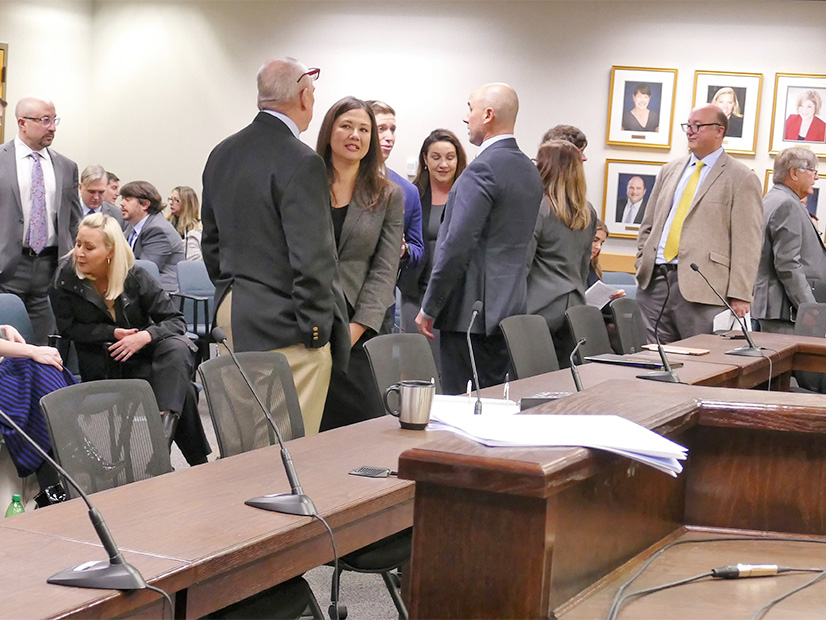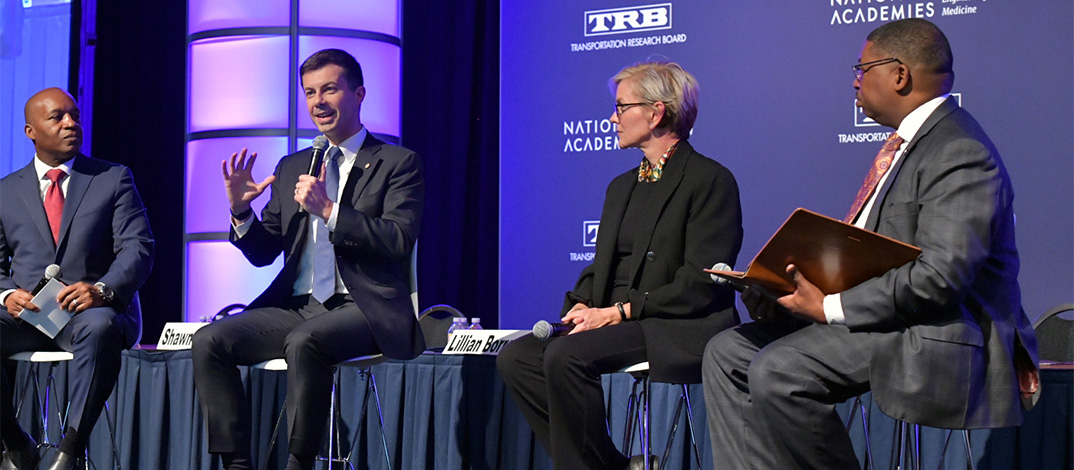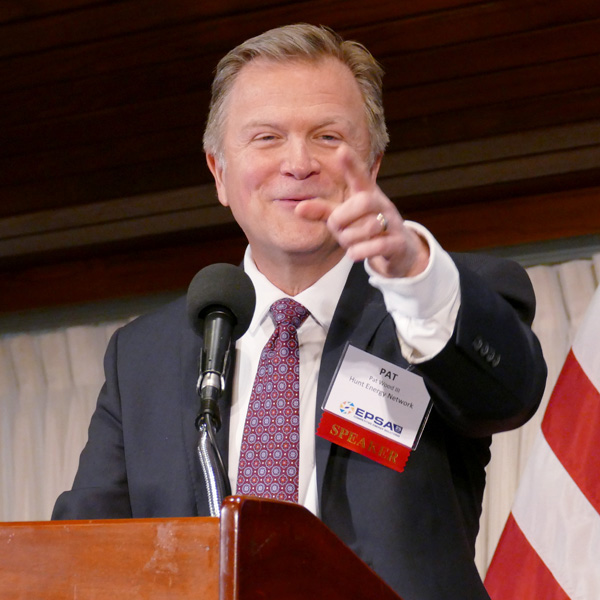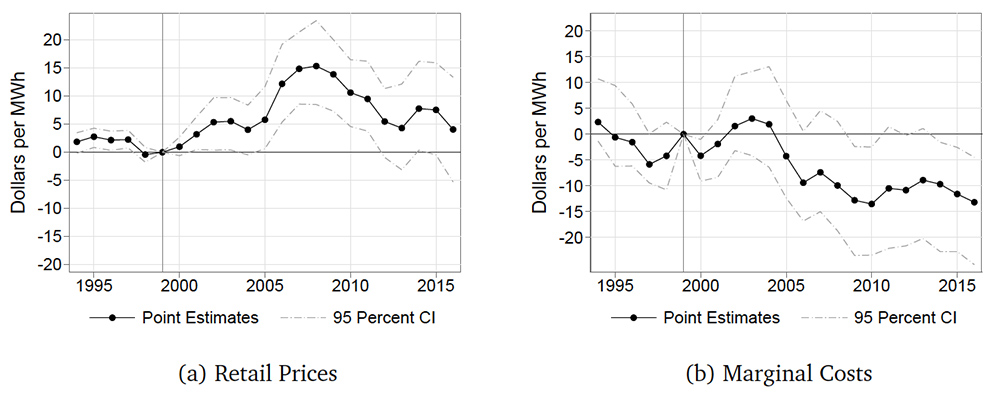AUSTIN, Texas — Texas regulators last week continued their deliberations of proposed ERCOT market redesigns, narrowing their focus to the favored performance credit mechanism.
To the disappointment of some, however, the Public Utility Commission did not take a vote on whether to recommend the market mechanism to lawmakers as its preferred design. The Texas Legislature opened its 88th session Jan. 10 and has been openly skeptical of the PCM, as it is known, and wants to see new dispatchable generation (i.e., thermal) added to the system. (See ERCOT Survives One Test, Faces Another.)
Michele Richmond, who leads a trade association representing ERCOT generators and wholesale marketers that supports the PCM, said she found the long day’s discussion to be “very good,” but still wanting.
“A decision is what gets movement on new investment. A recommendation to the legislature is not a decision. It’s a recommendation,” she told RTO Insider following the Jan. 12 meeting. “The commission should adopt a decision on [the market design]. And then, if the legislature wants to weigh in, if they want a new direction, then that’s what should happen.”
Following the 2021 deadly winter storm, lawmakers directed the PUC to establish a reliability standard to ensure operations during extreme heat and cold weather and when output is reduced from weather-dependent wind turbines and solar panels. The commission has promised to send its preferred market design to the legislature for its feedback, as PUC Chair Peter Lake reminded his fellow commissioners and those listening.
 ERCOT stakeholders and PUC staff gather before the commission’s Jan. 12 open meeting. | © RTO Insider LLC
ERCOT stakeholders and PUC staff gather before the commission’s Jan. 12 open meeting. | © RTO Insider LLC
“If implemented. We still have to hear from the legislature,” Lake said of one suggested market change. “Subject to consideration by the legislature,” he said of another.
“Today’s discussion was a deliberation, not making a decision on anything or recommending anything,” Lake said in concluding the day’s discussion.
The commissioners agreed to return to their open meeting room Thursday to continue their deliberations, with the goal of selecting a “policy direction” to fulfill their statutory obligation and ensure “reliability during periods of low non-dispatchable power.” They will return on Jan. 26 to issue a final order.
That would be just fine with Richmond. Her Texas Competitive Power Advocates (TCPA) organization has said its members are committed to adding 4.5 GW of additional thermal generation to the ERCOT system if the PCM is adopted under the “right framework.”
TCPA members have banded together to create a website that points out it takes time and regulatory certainty to build new power plants. It includes a countdown clock that indicates a new power plant could come online as soon as April 25, 2025, assuming the PUC reaches a policy decision Thursday.
“I heard some pretty good consensus that something needs to be done,” Richmond said. “I think the point that was made is that [the PCM] does get new investment.”
The PCM, one of six alternatives studied by a San Francisco consulting firm, rewards generators for performance credits based on their performance during a determined number of scarcity hours. Those credits must be bought by load-serving entities based on their load during those same hours or exchanged by LSEs and generators in a voluntary forward market to hedge against negative outcomes in the retroactive settlement process. (See Proposed ERCOT Market Redesigns ‘Capacity-ish’ to Some.)
Katie Coleman, who represents Texas Industrial Energy Consumers, said the PCM is nothing more than a capacity market, anathema to many ERCOT stakeholders. Commissioner Will McAdams appeared to wince as one speaker mentioned “capacity market” in his testimony.
“It’s got all the problems a capacity market usually has,” Coleman said of the PCM while preparing to return from a weekend getaway. “It’s purely an administrative way for the government to order certain dollars to generators. The only difference with the PCM is that it’s backward looking.
“It diverts dollars to generators. It’s going to cost consumers billions of dollars,” Coleman added. She said that given most reliability events are caused by operational issues such as unpredictable weather or outages, the PCM won’t materially improve reliability.
The consultant’s own report to the PUC argues the PCM would result in an extra $460 million in annual system expenses by 2026, about a 2% increase over projected system costs. The firm, Energy and Environmental Economics (E3), did not recommend the mechanism, saying it was too complex. Instead, it put forth a forward reliability market as a “more suitable fit.”
E3’s Zach Ming, defending the firm’s report, said that under the PCM, generators receive credits “by being available, not by being dispatched.”
Stoic Energy’s Doug Lewin, a dedicated follower of all things ERCOT, said the PCM’s biggest problem is that it is “convoluted and extremely complicated.”
“That makes it hard to finance,” he tweeted. “Few investors, if any, will put money into long-term assets based on this. But existing generators will get a windfall.”
State Sen. Charles Schwertner (R), who chairs the powerful Business and Commerce Committee, reiterated his committee’s “serious concerns” with the PCM in a Jan. 11 letter to the PUC.
“Given … the clear absence of consensus among energy experts, advocates, and industry, unilaterally moving forward with a market design change such as the [PCM] option without consultation and collaboration with both the Texas House and Texas Senate is imprudent,” he wrote.
The PCM does have its supporters in Texas Gov. Greg Abbott and ERCOT CEO Pablo Vegas. Abbott, who has appointed all five commissioners in the last two years, said in his own filing that the mechanism “must be given strong consideration.”
“The fact that generators have already publicly committed to build thousands of new megawatts of dispatchable generation resources if the PCM is adopted and implemented by the PUC further supports this point,” he wrote.
Vegas said the mechanism “seems to offer the best combination of incentives that move our grid from a system characterized by extreme pricing, physical scarcity and conservation notices” by incenting generators to be available.
He said it will take staff as much as three and a half years to develop the PCM market system.
So, what will happen in the meantime? Vegas and the commission agree a bridge is needed for ERCOT to get by until the PCM is implemented. For the time being, that will consist of additional ancillary services and continued use of reliability unit commitments. RUCs have been in place since the summer of 2021 and raised concerns over the stress imposed on older generators.
 PUC Commissioner Lori Cobos (right) listens to Chair Peter Lake. | © RTO Insider LLC
PUC Commissioner Lori Cobos (right) listens to Chair Peter Lake. | © RTO Insider LLC
The PUC raised the use of reliability must-run resource deployments, which haven’t been issued since 2017. ERCOT ended NRG Energy’s Greens Bayou Unit 5 RMR contract in 2017; the unit was retired shortly thereafter. (See “NRG to Retire 806 MW of Mothballed Resources,” ERCOT Briefs: Week Ending Dec. 11, 2017.)
“I would strongly encourage this commission to avoid any type of policy path that relies on RMR in any way,” NRG’s Bill Barnes said. “An RMR contract means that you’re putting new dollars into one of the oldest, most inefficient resources on our grid. It is literally one of the worst uses of capital.”
“It concerns me that the only options we have are continued RUC and RMR,” Commissioner Lori Cobos said.
Richmond said a phased-in PCM could be installed quicker than other proposed bridge mechanisms, pointing to TCPA’s comments. She said that would signal the market when to self-commit, reducing the need for RUCs and “would provide economic incentives for existing dispatchable resources to remain in service.”
“It has a number of components that exist in the market and are familiar to everybody, so it should be fairly easy to phase that in,” she said.
ERCOT: December Storm ‘Non-event’
ERCOT’s Dan Woodfin, vice president of system operations, called the December winter storm a “non-event,” despite the repeat of thermal outages and gas supply problems that were reminiscent of the 2021 winter storm.
He told the PUC that nearly 6 GW of coal and gas energy came offline after the cold weather swept through the state. Woodfin said global weather models predicted a significant cold weather event for Dec. 22, but the cold was “deeper and quicker” than the forecasts. ERCOT is reaching out to other grid operators who suffered similar under forecasts, he said.
Staff is also contacting generators that went offline to learn what happened. Woodfin said the weatherization requirements now in effect were effective in maintaining supply.
“We can see the grid we have now. The generators we have now are reliable. We just need more of them,” Woodfin told the commission, promising a full report in several weeks.
The PUC also approved its biennial report to the Texas legislature. The report highlights the previous two years since the commission was reorganized after the 2021 winter storm, going from three members to five, and documents in actions in regulating the state’s electric, telecommunications and water industries.









